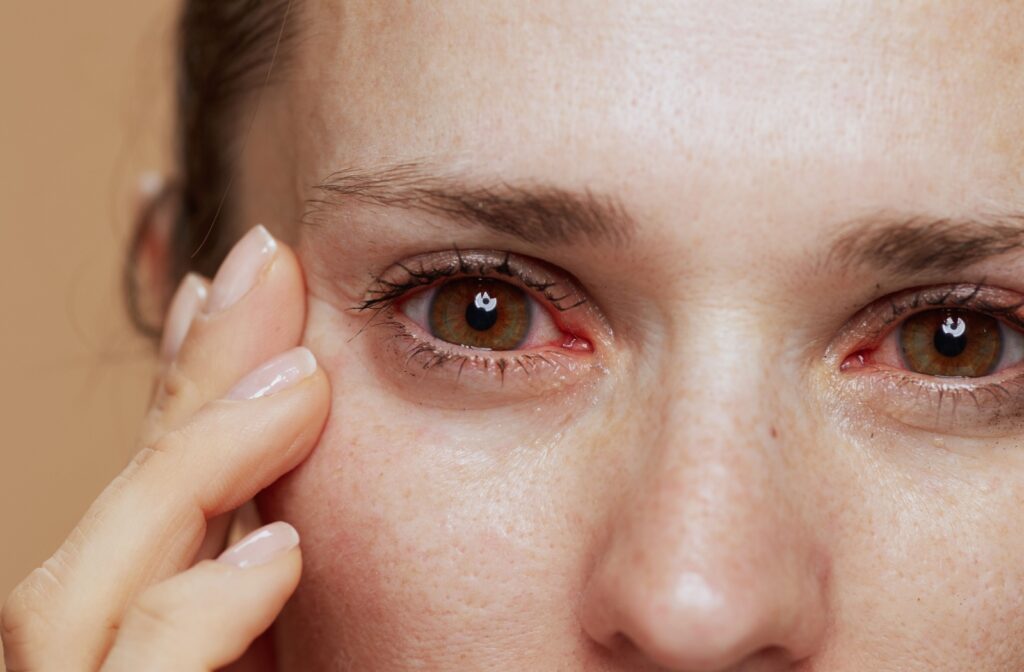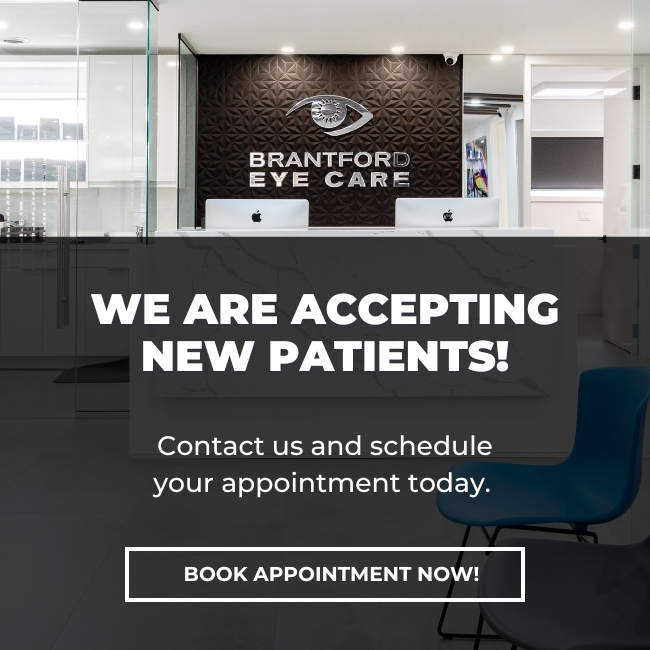Dry eyes are a common issue that many patients face, often leading to discomfort and impaired vision. One of the characteristic symptoms of digital eye strain is the gritty feeling under your eyelids after spending too long staring at a monitor. Understanding the root causes and effective treatments can significantly improve your eye health and quality of life.
Some of the most common causes of dry eyes are:
- Environmental factors
- Dehydration or dietary deficiencies
- Meibomian gland dysfunction (MGD)
- Blepharitis
- Demodex mite infestation
And some of the most common treatments are:
- Hydration & dietary changes
- Environmental changes
- Artificial tears
- Warm compresses
- Lid wipes
- Hypochlorous acid spray
- Zocular Eyelid System Treatment (ZEST)
- Intense regulated pulsed light (IRPL)
Common Causes of Dry Eyes
Dry eyes are ultimately caused when the layer of tears over your eyes, called the tear film, dries out too much to keep your eyes moisturised. This can be because your eyes aren’t producing enough tears to keep up with the dryness of the environment, or aren’t producing tears with the right chemical composition. Here are a few factors that contribute to dry eyes.
Environmental Factors
If the environment around you is dry, the air will draw moisture out of the tear layer that protects your eyes. This might be the result of living in a dry climate, or could involve other factors like wind (including indoor fans) and air pollution or smoke.
Dehydration or Dietary Deficiencies
Your body needs water and essential fatty acids to produce a tear film with the right chemical composition to keep your eyes lubricated. Not having enough of one or both of these in your diet will make it harder for your body to produce a tear film and result in your eyes drying out.
Infrequent Blinking
Blinking is your body’s way of making sure the tear film is distributed around the eye. When we focus intently on a task, such as working at a computer, the tear film isn’t distributed properly and our eyes dry out as a result.
Meibomian Gland Dysfunction (MGD)
The meibomian glands, located along the edge of your eyelids, are responsible for secreting the oils that form one part of the tear layer. When these glands become blocked or dysfunctional, it can lead to poor tear quality and dry eyes.
Blepharitis
Blepharitis is an inflammation of the eyelids, often resulting in redness, swelling, and flaky skin around the eyes. This condition can clog the Meibomian glands, exacerbating dry eye symptoms. Common causes of blepharitis include bacterial infections, allergies, and skin conditions like rosacea.
Demodex Mite Infestation
Demodex mites are tiny parasites that live in the hair follicles and oil glands of your skin. An overpopulation of these mites on your eyelids can lead to inflammation and blockage of the meibomian glands, contributing to dry eyes. Demodex infestation is often associated with blepharitis.
Common Treatments for Dry Eyes
Hydration & Dietary Changes
If your body lacks the nutrients to produce an effective tear film, drinking more water and supplementing with omega-3 fatty acids can help keep your eyes lubricated.
Environmental Changes
If your dry eyes are caused by environmental factors, making adjustments to your environment may help.
Changing your seating position or the angle of your fan to keep wind from blowing directly into your eyes will help prevent moisture being taken away by air movement. A humidifier can prevent dry air from drawing moisture out of your eyes, and an air filtration system can remove pollutants that dry and irritate your eye’s surface.
Developing Better Blinking Habits
When working in front of a screen, take breaks often enough to allow your eyes to catch up on their blinking. The 20-20-20 rule is a good guideline for both preventing dry eye, and reducing eye strain overall.
Artificial Tears
Artificial tears are an over-the-counter tear drop that act like your body’s natural tear film, helping to keep your eyes lubricated and protected. They can be an effective short-term treatment for dry eyes.
Warm Compresses
Warm compresses can help relieve dry eye symptoms by loosening any blockages in the Meibomian glands and promoting better oil flow. Products like the Bruder mask are specifically designed for this purpose and can be easily heated in the microwave for convenient use.
Lid Wipes
Maintaining good eyelid hygiene is crucial for managing conditions like blepharitis and preventing further gland blockages. Lid wipes are pre-moistened pads that can effectively clean the eyelid margins, removing debris and reducing inflammation.
Hypochlorous Acid Spray
Hypochlorous acid spray is another excellent option for maintaining eyelid hygiene. This gentle spray can eliminate bacteria and mites like Demodex that contribute to eyelid inflammation and dry eyes. Simply spray it directly on your eyelids twice per eye.
ZEST (Zocular Eyelid System Treatment) is a professional in-office treatment designed to cleanse the eyelids and remove biofilm, debris, and excess oils. This can help reduce symptoms of dry eyes and improve overall eye health.
Intense Pulsed Light (IPL)
Intense Pulsed Light (IPL) therapy is another advanced treatment for chronic dry eyes, particularly those caused by MGD. IPL uses light pulses to reduce inflammation and clear blockages in the Meibomian glands, improving tear quality and eye comfort.
Conclusion
Dry eyes can be a persistent and uncomfortable condition, but understanding the causes and available treatments can make managing it much easier. Whether it’s through daily warm compresses, eyelid hygiene routines, or in-office treatments like ZEST and IPL, there are numerous ways to alleviate dry eye symptoms and improve your eye health.
Brantford Eye Care is committed to giving you the best possible care for your dry eyes. For more personalized advice and treatment options, don’t hesitate to schedule an appointment with your eye care specialist.




